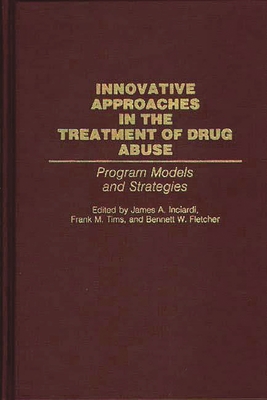You are here
Back to topInnovative Approaches in the Treatment of Drug Abuse: Program Models and Strategies (Contributions in Criminology and Penology) (Hardcover)
Description
This collection of studies by experts on drug abuse treatment represents the state of the art in research examining what works best and why in a nationwide effort to improve and expand treatment to counteract the epidemic use of cocaine and the spread of AIDS. Investigators at the National Institute on Drug Abuse describe 15 projects that test intervention strategies to improve client recruitment, retention, performance, and treatment outcomes in a range of community-based programs relating to different populations, treatment settings, and research designs addressing real world issues. The findings, analysis, and recommendations should counteract misunderstanding and misinformation about the nature of drug abuse among 5.5 million patients and the effectiveness of current treatment programs. This report is meant for students, scholars, and professionals dealing with public health, criminal justice, America's social problems and governmental policies.
This professional report describes innovative programs for improving the treatment of drug abuse. The first part of the book relates to methadone programs limiting the spread of HIV among high-risk narcotics addicts, improving retention on methadone maintenance, and enhancing treatment through a mobile health service. The second segment of the book deals with residential programs, assessing their impact, evaluating a specific outreach project, providing a longitudinal evaluation of dually diagnosed men in different community programs. Case management programs described in the third section of the study include an assessment of a model for intravenous drug users, an assertive community treatment project for hard-to-reach populations, and problems with and remedies for treatment drop-outs and noncompliers. The fourth part of the report concerns system-evaluation of strategies for dealing more effectively with drug abuse today. It covers multi-modality and other eclectic programs, such as a therapeutic community day treatment model for methadone clients, a behavioral model for treating cocaine addicts, treatments for AIDS risk reduction, and a drug day treatment using the therapeutic community model.About the Author
JAMES A. INCIARDI, director of the Center for the Drug and Alcohol Studies at the University of Delaware, is also a professor in the Department of Sociology and Criminal Justice. He is the editor of Handbook of Drug Control in the United States (Greenwood Press, 1990) and has published more than 130 articles, chapters, and books in the area of criminal justice, substance abuse, history, folklore, criminology, medicine, law, public policy, and AIDS. He is the principal investigator of two federally funded drug treatment research projects for criminal justice populations. FRANK M. TIMS, deputy chief, Treatment Research Branch, National Institute on Drug Abuse has published a number of research monographs, including Relapse and Recovery in Drug Abuse, Drug Abuse Treatment in Prisons and Jails, and Compulsory Treatment of Drug Abuse. He has been recognized nationally for his scientific leadership and outstanding contributions by the U.S. Alcohol, Drug Abuse, and Mental Health Administration, and has served as a delegate to Eastern Europe to assess the scope of drug problems and research collaboration opportunities in that region. BENNETT W. FLETCHER's primary work at the National Institute on Drug Abuse has been in developing large-scale longitudinal drug treatment evaluation research, including the Drug Abuse Treatment Outcome Study.
